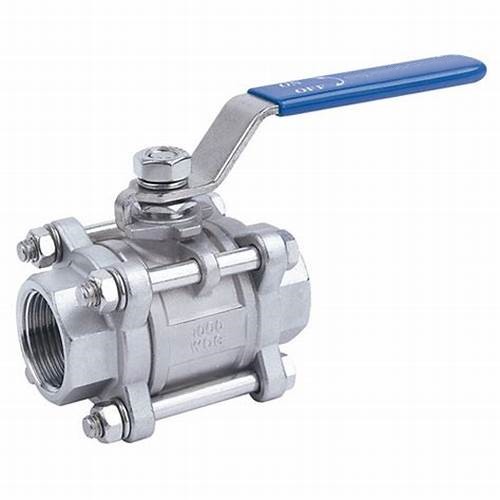check valve pilot operated
Understanding Pilot Operated Check Valves
Pilot operated check valves (POCVs) are essential components in hydraulic and pneumatic systems, designed to prevent backflow while allowing free flow in one direction under certain conditions. These valves play a crucial role in maintaining the efficiency, safety, and functionality of fluid power systems in various applications, from industrial machinery to mobile equipment. This article aims to explore the fundamentals of pilot operated check valves, their operation, advantages, applications, and key considerations.
1. Basic Principles and Operation
A pilot operated check valve consists of two main sections the check valve itself and the pilot mechanism. The check valve allows fluid to flow in one direction, automatically closing to prevent reverse flow. The pilot mechanism, which activates upon the application of pressure in the pilot line, helps to keep the check valve open under specific conditions.
When fluid flows in the forward direction, it creates pressure that lifts the check valve off its seat, allowing flow. However, if the flow needs to reverse or if the upstream pressure drops, the check valve will close to prevent backflow. The unique aspect of POCVs is their reliance on a pilot signal — typically a small amount of fluid pressure — to keep the valve open during certain operation phases, enhancing both flow control and system stability.
2. Advantages of Pilot Operated Check Valves
- Reduced Pressure Drop One of the main advantages of POCVs is their ability to maintain a low-pressure drop across the valve. This is particularly useful in hydraulic systems where efficiency is critical. The design allows for minimal resistance to fluid flow in the forward direction, leading to improved energy efficiency.
- Enhanced Control Pilot operated check valves provide precise control over flow directions and conditions. The pilot mechanism allows operators to manage fluid flow with greater accuracy, which is especially beneficial in applications requiring specific motion profiles.
- Safety Features POCVs are equipped with built-in safety mechanisms. In the event of a system failure or pressure drop, the check valve will automatically close, preventing potential hazards associated with backflow. This feature is particularly important in systems where backflow could lead to equipment damage or hazardous conditions.
- Compact Design Compared to conventional check valves, POCVs are generally more compact due to their integrated pilot function. This smaller footprint allows for better integration into tight spaces within machinery, minimizing the overall system size.
3. Applications
Pilot operated check valves are widely used across various industries. Some common applications include
check valve pilot operated

- Mobile Equipment In construction machinery, such as excavators and bulldozers, POCVs help control hydraulic cylinders, ensuring controlled movement without backflow that could damage components.
- Industrial Automation POCVs are employed in automated systems to operate actuators and manage fluid processes, ensuring smooth and efficient operations
.- Hydraulic Power Units In hydraulic power systems, these valves are critical for maintaining pressure and controlling flow, thereby enhancing system stability and performance.
- Aerospace and Aviation POCVs are utilized in hydraulic systems of aircraft to ensure safety and reliability during flight operations, where backflow could pose severe risks.
4. Key Considerations
While pilot operated check valves offer numerous advantages, there are essential factors to consider when selecting and applying them
- Operating Conditions It's vital to ensure that the selected POCV is suitable for the intended pressure and temperature conditions of the system. Each application may have specific requirements that can affect valve performance.
- Pilot Signal Requirements Understanding the necessary pilot pressure and flow is crucial to the effective operation of POCVs. Insufficient pilot signal can lead to improper valve operation.
- Maintenance Needs Regular maintenance is necessary to ensure the longevity and performance of pilot operated check valves. This includes routine inspections and potential replacements of seals and pilot components.
Conclusion
Pilot operated check valves are vital components in modern fluid power systems, providing enhanced control, safety, and efficiency. Their unique design allows for precise management of fluid flows in various applications, making them indispensable in many industrial processes. By understanding their operation, advantages, and key considerations, engineers and operators can effectively integrate POCVs into their systems, ensuring reliable and safe operations. As industries continue to evolve towards more efficient and automated solutions, the role of pilot operated check valves will undoubtedly remain a cornerstone of hydraulic and pneumatic system design.
-
The Key to Fluid Control: Exploring the Advantages of Ball Valves in Industrial SystemsNewsJul.09,2025
-
The Versatile World of 1, 2, and 3 Piece Ball ValvesNewsJul.09,2025
-
Stainless Steel Ball Valves: The Ideal Choice for Efficient Flow ControlNewsJul.09,2025
-
Optimizing Fluid Control with Ball Float ValvesNewsJul.09,2025
-
Manual Gate Valves: Essential for Control and EfficiencyNewsJul.09,2025
-
Everything You Need to Know About Butterfly ValvesNewsJul.09,2025
-
The Versatility of Wafer Type Butterfly ValvesNewsJul.08,2025




